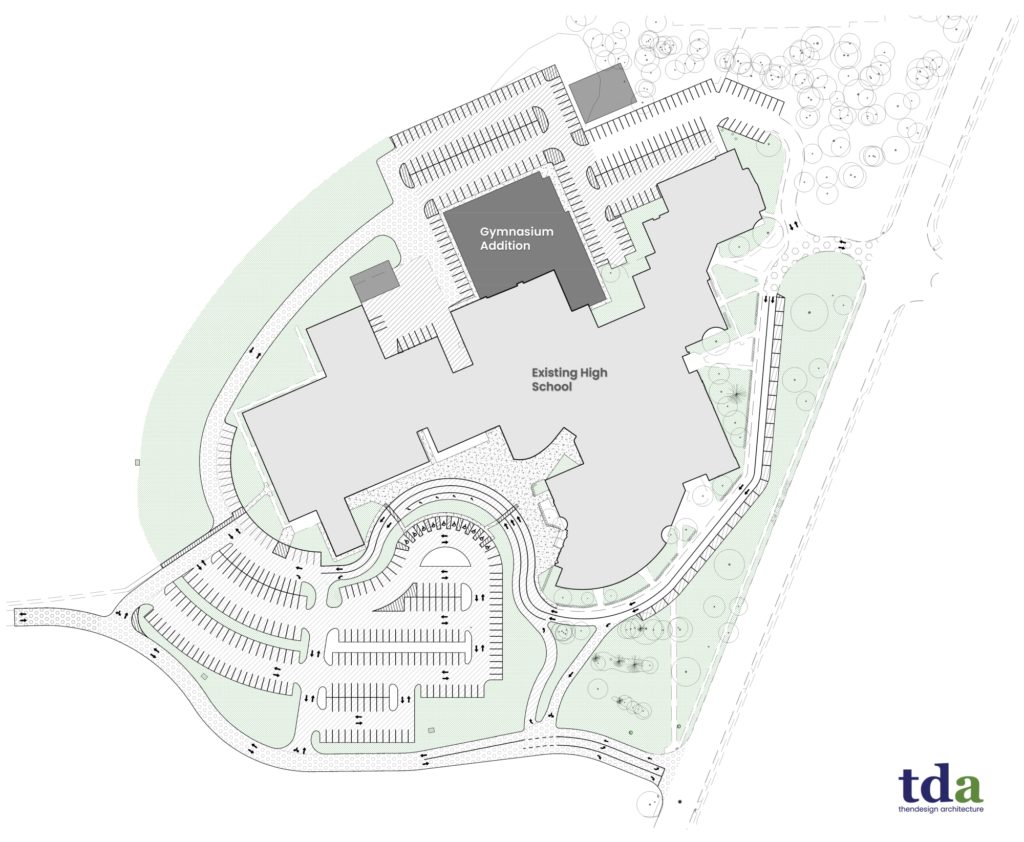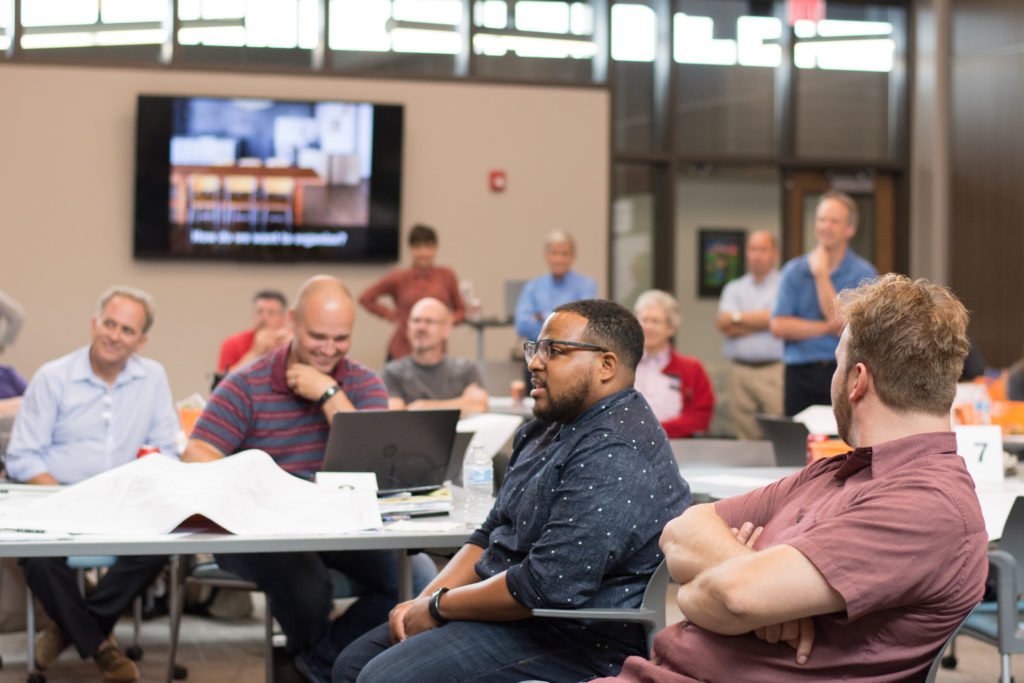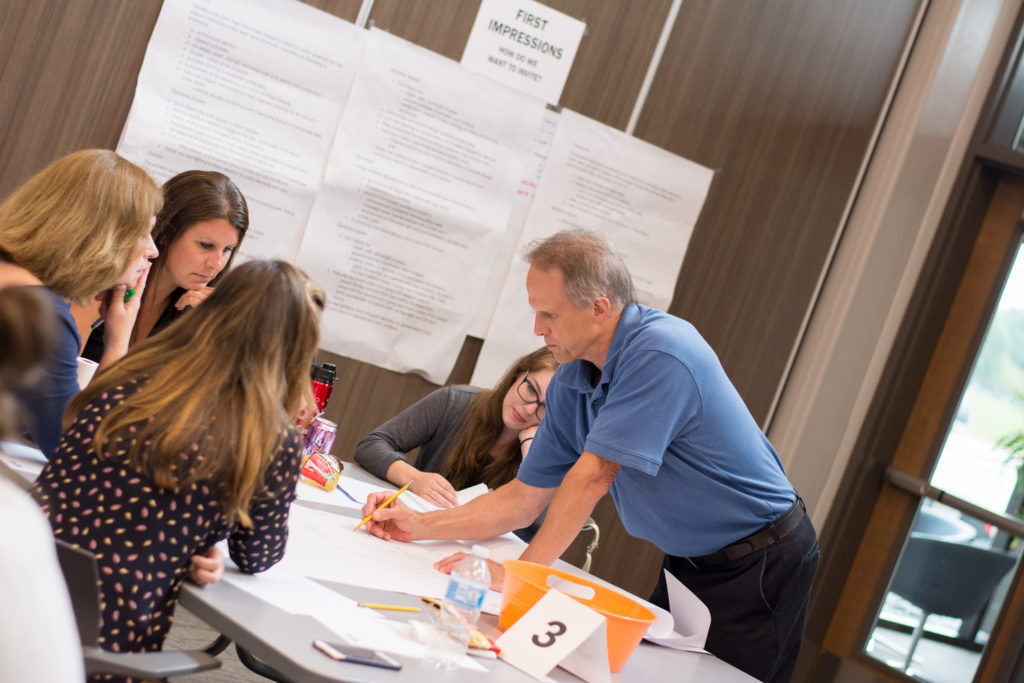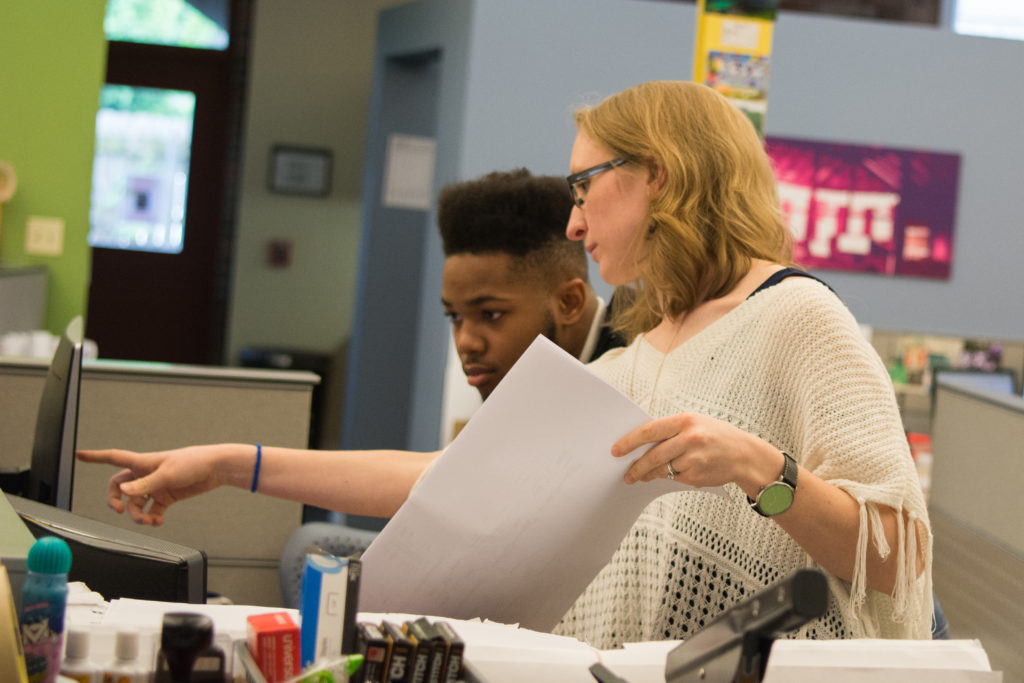Kent City Schools - A District-Wide Renovation Project
Kent City Schools is a large school district serving over 3,000 students. Established in the 1860s, the district is passionate about education and operates six school buildings spread across the City of Kent, Franklin Township and the Village of Sugar Bush Knolls. While the buildings are well maintained, changes in the educational landscape and the age of the facilities necessitated improvements. A $25 million “No New Tax” construction bond was passed in 2020 and is being used to make renovations to each facility. The master plan identifies three major improvement categories and renderings have been developed showing the anticipated improvements coming to the schools. Despite the challenges facing educators in 2021, Kent City Schools is focusing on education and executing a district-wide renovation project.
Renderings of the Roosevelt High School gymnasium addition, artificial turf and Field House
Challenges for Many School Districts in Ohio
Across the state, many school districts are faced with the difficult decision of how to deal with aging facilities. While some can construct new buildings, it isn’t always necessary, and in some instances, renovation is a wiser economic decision.
Kent operates six schools in their district: Davey, Longcoy, Holden and Walls are elementary schools, Stanton Middle School serves grades 6-8, and Theodore Roosevelt High School serves grades 9-12. Since they are all in different locations, built at different times, (the oldest was built in the 1920’s and the newest opened in 1999), each has its own unique characteristics and needs.
Due to the maturation of an existing construction bond the district was able to make improvements to every facility without raising costs in the community. Considering the number of buildings and budget involved, a district-wide renovation project maximized the impact on student’s education.
Since the schools were well maintained, it makes upgrading them easier and more cost effective. The district can maintain the history of each building and neighborhood connection, while installing critical modern mechanical systems that will breathe new life into the structures and improve the occupant’s thermal comfort.
Kent City Schools - Existing Conditions
The Bond Issue
In the spring of 2020, the community passed a “No New Tax” Bond issue. This new construction bond was key to making the large-scale improvements planned by the district.
Gratefully, George Joseph, the Superintendent of Kent Schools, stated: “Our “No New Tax” Bond Issue is a unique opportunity for Kent citizens to improve our facilities without raising taxes. Although we constantly maintain and repair our facilities, the district has not had the funding to make substantial building improvements or additions in the last 20 years. Funds generated from this Bond Issue will allow us to make needed improvements and upgrades to all six Kent schools.”
A construction bond is a commitment made by the community to pay a certain amount of taxes which go towards permanent construction or asset improvements. Kent City Schools took advantage of the maturing bonds issued over 20 years ago from the construction of the Stanton Middle School and improvements in Roosevelt, and Davey schools. This new bond now finances the cost of renovations to the schools in 2020-2021 without raising taxes.
The superintendent was grateful to the community for their support. He stated, “Thank you to the Kent community for your overwhelming support of the Kent City Schools by voting to support the “No New Tax” Bond Issue in April…it makes a huge difference in making needed improvements and upgrades to our six school buildings.” Mr. Joseph has been a tireless advocate for students and educators in the Kent school system, “Our educators care deeply about students and their academic and emotional success. We are grateful for the support of the Kent community.”
This bond issue enabled the district to make these large-scale improvements to support future students.
A site plan showing the revised parking layout around Theodore Roosevelt High School.
Three Categories for District-Wide Renovations
Kent City Schools engaged with The Impact Group, their Strategic Planning facilitator, to gauge the community’s preference on renovation versus new construction. According to the Impact Group, the Kent community turned out for the highest level of participation they had ever experienced. 41% of respondents supported renovations, while 31% supported new construction. Renovating existing facilities was a clear choice in the community.
Leading up to construction for the district, Kent City Schools partnered with ThenDesign Architecture to create an educational masterplan for the district. This extensive process allowed the administration and educational planners to work together, identifying the needs and opportunities for each school facility.
Having this master plan allowed the designers to identify a roadmap for educational success in the district. Even though the buildings had not received significant improvements in the last 20 years, they were very well maintained and good candidates for renovation.
Cheryl Fisher, an educational planner with TDA worked extensively with the district on their plans. “We started assessing all of the district facilities and identifying what their building needs were district-wide and even exploring the possibility of new schools with the OFCC. We looked at the facility condition, we looked at educational adequacy of space and worked with a large “facilities improvement cabinet” and went through an in-depth analysis of the data. The project was just so big, we had to come up with a list of priorities.” These priorities revolved around, safety and security, improving the instructional environment and upgrading the athletic and performing arts facilities.
During the design process, the district has engaged with educators, students and professionals on the new building improvements. In late October 2020, students in the urban forestry program engaged with professionals, including Geo-Sci, a local Geotechnical and Engineering consultant, to take soil samples where the future addition will be located. Since the land being developed is near a wooded lot, this new construction project becomes a real time “laboratory” for high school students to better understand the impact of construction on the natural environment.
Student engagement in the Urban Forestry Program
1) Safety and Security for Students
The first area of improvement was in rethinking safety and security for students.
As education has evolved, so has the need to maintain the perimeter of schools and keep track of visitors. Modern schools utilize “secure vestibules,” as a transition space that allows guests to check in using electronic access controls, ensuring the administration can run a background check on visitors before they enter the building.
Since most of the schools in the Kent district were built before secure entries were considered necessary, all 6 schools in the district will get enhanced security at the entrances. Features include electronic access controls and security cameras. These measures will make a huge difference in allowing staff to maintain a safe environment for students. In addition, site security will be improved by providing each building with energy efficient, high output LED lighting in their parking lots. Not only does this feature enhance safety forces patrolling the schools, it also enhances visibility for families attending after-school activities in the early mornings or evenings.
Student parkers at the high school now have to cross the heavily trafficked Roosevelt Drive to enter the school. With the reconfigured site plan, Roosevelt Drive will be moved to the south and all parking relocated to the north of Roosevelt Drive creating a safer entry. The visitor and ADA parking spaces are also moved closer to the main secure entrance along with a drop off lane separate from the bus drop off. The bus drop off road that enters off the north entrance of Mantua has been widened to allow parallel parking along this road while providing a fire lane.
Secure Vestibules for Davey and Holden Elementary Schools
2) Improving the Instructional Environment
The majority of student’s time is spent in a classroom or other instructional environments. When determining important facilities upgrades, the classroom environment was prioritized with two major improvements for every building in the district.
The first of these improvements is replacing the fifty plus year old ‘univent’ classroom heating and ventilation units. The existing units have no capability for air conditioning and take around 30 minutes to completely exchange the indoor air. The new system replaces those with heating and cooling units which exchange air in almost half the time, provide a better indoor air mix and are equipped with bipolar ionization capabilities. The air quality and thermal comfort of the students will be greatly improved with these new univents while also reducing maintenance costs. The second major improvement to the learning environment will be new LED’s replacing the aging fluorescent bulbs. LED lighting has many benefits including energy efficiency, better light output, long lasting lifespan and a much better CRI count. “CRI” or “color rendering index” measures a lights ability to represent colors in a more natural way, with higher CRI’s being better suited for educational environments.
Additionally, two of the elementary schools (Holden and Walls) are receiving new gymnasium floors, while the Davey and Longcoy gym floors were refinished in the summer of 2020. Davey and Stanton also will receive new flooring to replace finishes that have failed with age.
Athletic Engagement Session in Richard Roberts Auditorium
3) Improving Athletic and Performing Arts Facilities
Finally, Theodore Roosevelt High School is receiving several upgrades in the form of improving the athletic facilities and performing arts spaces.
As budgets and plans were formulated, TDA began engaging directly with the district on designs for the new sports field, gymnasium, and field house. Teachers, administrators, and coaches met with representatives from TDA and Shook Construction to get updates on the design and construction progress. Among the details discussed, were preliminary plans for the new gym and field house.
The new gymnasium complex will be a large addition to the high school and will dramatically change athletic events there. The addition creates a new 14,000 sf gym that includes a new entryway, ticket booth, concession stand, athletic storage, locker rooms and an 1,800 sf multipurpose space to be used in the winter season for wrestling. Completing the athletic upgrades will be the high school natatorium. It is budgeted to get new bleachers and filtration system.
Cheryl having worked closely with the team throughout master planning noted: “They’re one of the few districts of this size and enrollment that only has one gym. They are challenged when trying to fit all the activities scheduled during the day and night during game seasons. This addition gives them a new gym which is larger than the old one and allows them to have a competition and auxiliary gym. So multiple activities can take place simultaneously.”
Theodore Roosevelt High School students can also look forward to a new synthetic turf field with an adjacent field house that houses a concession stand, public restrooms, “spirit shop,” varsity team locker rooms and training room. The stadium is also receiving an upgraded sound system, and lighting improvements.
Finally, additional plans are underway for the 50-year-old Richard Roberts auditorium. Improvements to this performance space include a thrust stage extension that will improve acoustics while adding performance space, widened aisles for easier visitor access, wayfinding floor level LEDs, acoustic treatment, and new red upholstered auditorium seating and carpeting throughout the auditorium.
Kent City Schools - A District-Wide Renovation Project
The net result of these changes across 6 buildings, is a big impact on the quality of education, athletics, and artistic pursuits by students. The cumulative effects of such improvements make a profound difference in the overall educational experience.
Improving on existing facilities through renovation work can breathe new life into structures, extending their life spans. Targeted improvements in facilities provide solutions that will service the community for decades to come. Kent City Schools, by assessing their current facilities, master planning and executing on their plans shows that a district-wide renovation project can be successful.
To stay up to date on future construction announcements, visit the Kent City Schools website.

Ryan Caswell
Communications
Get our newsletter with insights, events and tips.
Recent Posts:
Brunswick High School Senior Seminar Presentations
New Mentor High School Baseball Field Opens
North Ridgeville Visual Preference Exercise
Meet the Designers: Katherine Mitchell
Garfield Heights High School Stadium Groundbreaking




